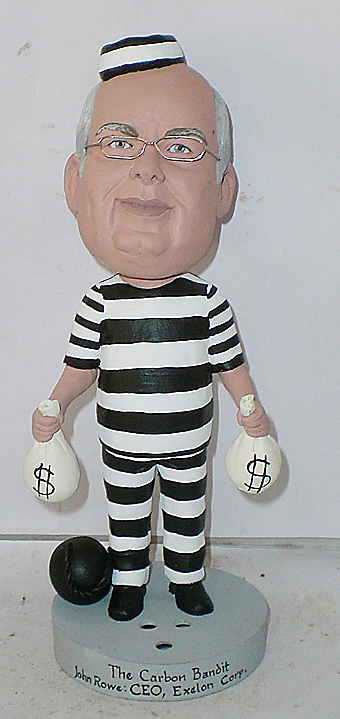by Steven Milloy
December 15, 2010, Human Events
Last Friday’s federal appellate court decision allowing the Obama administration’s greenhouse gas regulations to take effect Jan. 2 is an unnecessary travesty for taxpayers, consumers, businesses and states.
The ruling by the U.S. Court of Appeals for the District of Columbia Circuit is by no means the final word on whether the U.S. Environmental Protection Agency’s rules are legal, but it does allow them to take effect pending their litigation.
The court (Clinton appointee David Tatel, Bush appointee Janice Rogers Brown, and former-dope-smoking Reagan appointee Douglas Ginsburg presiding) held that the industry lawyers challenging the rules failed to show that “the harms they allege are certain, rather than speculative, or that the alleged harm[s] will directly result from [the EPA’s regulations].”
This is ridiculous.
On Jan. 2, the EPA will start writing permits for power plants and other large emitters of greenhouse gases. Overlooking for a moment the costs and hassles to emitters and consumers that will undoubtedly be caused by the rules, at the very least this permit-writing process will cost the EPA and state permitting authorities (read “already strapped taxpayers”) about $80 million per year.
And what environmental benefits will be gained by these expenditures? You don’t have to be a global warming skeptic to respond “none.”
Under the Clean Air Act, if the EPA decides to regulate a pollutant, the so-called “best available control technology” (BACT) must be used to reduce emissions. But, funny enough, there is no BACT for greenhouse gases like carbon dioxide (CO2).
Burying CO2 underground — so-called carbon capture and sequestration — is experimental, and so is not considered BACT. The Obama EPA would love to declare natural gas as BACT for electric power generation, but it is not yet willing to escalate its war against the coal industry.
Since there is no commercially available technology to reduce CO2 emissions from smokestacks, few will be avoided — even the EPA acknowledges that.
So at the very least, Judges Rogers, Tatel and Ginsburg have imposed huge costs on taxpayers for precisely nothing in return. Apparently there is nothing quite like a lifetime appointment away from the real world.
But the wasted $80 million is really only the tip of the iceberg. There remain a number of ways that the EPA’s rules can cause further harm, according to environmental consultant Rich Trzupek.
First and foremost, the permitting process is open to public comment, most of which tends to come from environmental activist groups who typically use the process to delay permits and harass applicants. There’s nothing speculative about this harassment; it will happen.
Next, the Clean Air Act allows states to charge permit holders fees based on the amount of emissions. This would essentially be a carbon tax passed on to consumers through higher prices.
The EPA is directing state permitting agencies to press for energy efficiency in permits, enabling regulators to meddle in business operations when it comes to equipment selection, for example. And since high-efficiency equipment tends to cost more money, consumers can expect to absorb those costs as well.
The EPA is also advising states that they can engage in emission trade-offs in permitting — allowing increases in some other regulated pollutants in exchange for cuts in greenhouse gas emissions. But such “backsliding,” as it is termed by environmentalist vigilantes, would merely provide another opportunity to harass permit applicants.
States say they will be harmed by the EPA rules. Texas, in particular, has said it isn’t ready, willing or able to regulate greenhouse gas emissions.
In a September filing, Texas’ attorney general told the court, “If Texas is unwilling or proves unable to accede to [the EPA’s] unlawful [rules], the [EPA] has threatened to impose a permit moratorium that would halt as many as 167 projects in its first year, costing the state jobs, business opportunities, and tax revenues. In effect, due to uncertainty resulting from the agency’s actions, a de facto construction ban is already in place.”
Demanding a showing of more harm than the foregoing is more sadistic than judicial in nature.
The EPA is out of control and the federal judiciary is out of touch. Let’s hope the new GOP-controlled House is up to the challenge of using its budget and investigative powers to get a grip on the EPA. Revamping the courts and the laws they interpret will have to wait until at least 2013.
Mr. Milloy is the founder and publisher of JunkScience.com. His columns and op-ed pieces have appeared in the Wall Street Journal, USA Today, Financial Times, and Los Angeles Times. He is the author of “Green Hell,” a book from Regnery Publishing.
Note: This column erred in originally reporting Judge Judith W. Rogers, rather than Judge Janice Rogers Brown, as member of the three-judge court. I regret the error.
